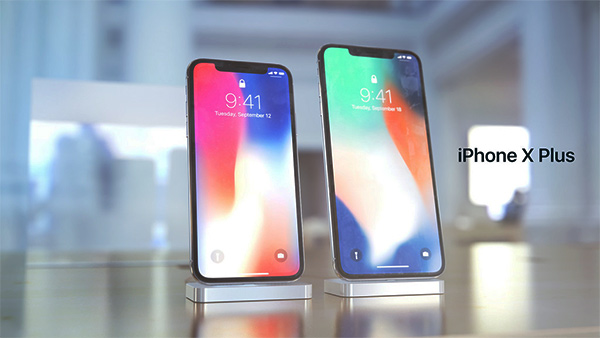The 2018 iPhone lineup has been less than clear ever since Apple released three new iPhones at the end of 2017. With the iPhone 8 and iPhone 8 Plus being joined by the iPhone X, questions were asked about whether the 2018 releases would follow that same pattern of offering two standard iPhone models with a premium iPhone X replacement atop the iPhone tree.
According to Bloomberg‘s notoriously well-connected Mark Gurman, things will be a little different in 2018, although we will still see at least three new models debut.

In a report published today, Gurman says that we will see three new iPhones come September time; the largest iPhone we’ve seen to date, an upgraded iPhone X and a cheaper model iPhone that will still offer some of the flagship model’s main, or “key” features.
The idea of a larger iPhone than we have seen before may tie in well with previous rumors that an iPhone X Plus-like device is on the horizon, with Gurman saying that “Apple wants to appeal to the growing number of consumers who crave the multitasking attributes of so-called phablets while also catering to those looking for a more affordable version of the iPhone X, according to people familiar with the products.”

iPhone X Plus render by Martin Hajek
With a screen size of almost 6.5 inches, this device will be one of the largest smartphones on the market.
Codenamed D33 according to sources unnamed by Bloomberg, the new device apparently has hardware currently in the prototyping stage that includes a 2688×1242 resolution, made up of an OLED display similar to that in use in the iPhone X, and will be powered by Apple A12 chip. There is also the possibility that this device will also ship with dual-SIM capabilities, at least in some regions, as well as new gold color.
With regards to the new, low-cost iPhone, Bloomberg’s report claims that while it will carry an iPhone X-like edge-to-edge display, it will be of the LCD variety in order to reduce costs.
The lack of a Home button will necessitate the need for Face ID support, though, bringing further iPhone X capabilities down the product lineup. An aluminum frame, rather than the steel used in the iPhone X, will also enable Apple to reduce costs.
(Source: Bloomberg)
You may also like to check out:
- Download Android 8.1 ROM For Nexus 6P, 5X, 5 [Custom Version]
- LineageOS 15.1 Download For Nexus 6P, 5X, OnePlus 3, 3T, 5, Xiaomi And Others Released
- iOS 11.2.6 Jailbreak Update: SEP And Baseband Compatible For An iOS 11.1.2 Restore And Jailbreak
- How To Downgrade iOS 11.2.6 On iPhone, iPad, iPod touch
- Download iOS 11.2.6 IPSW Links And OTA With Fix For Messages Crashing Bug
- Jailbreak iOS 11.2.6 / 11.2.5 / 11.2.2 On iPhone And iPad [Status Update]
- Jailbreak iOS 11 / 11.1.2 On iPhone X, 8, 7, iPad Using Electra Or LiberiOS [Updated]
You can follow us on Twitter, add us to your circle on Google+ or like our Facebook page to keep yourself updated on all the latest from Microsoft, Google, Apple and the Web.

